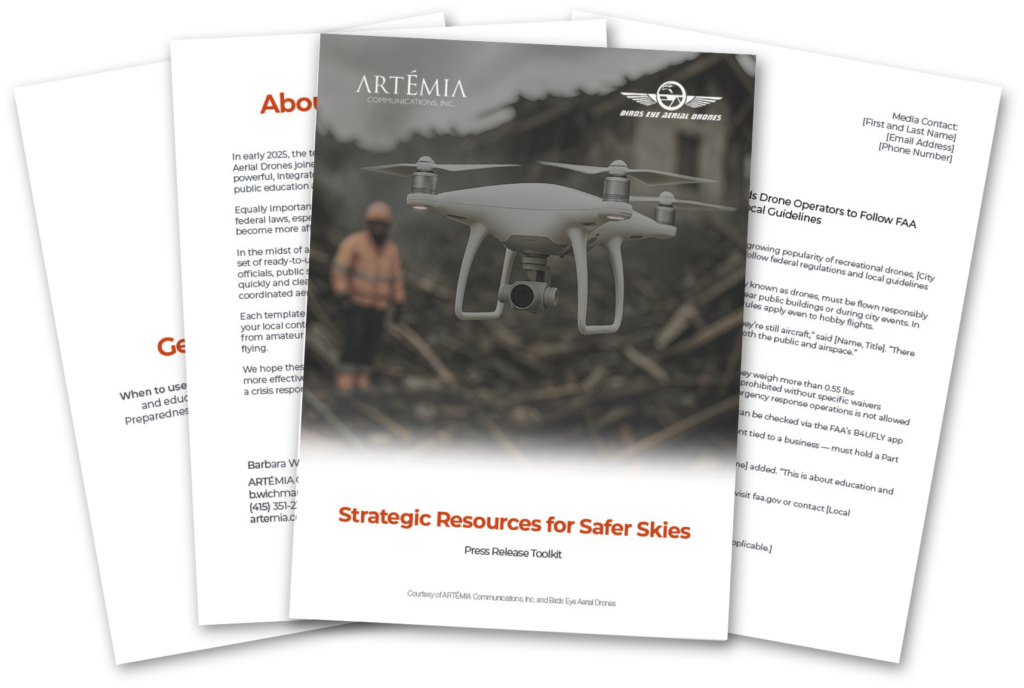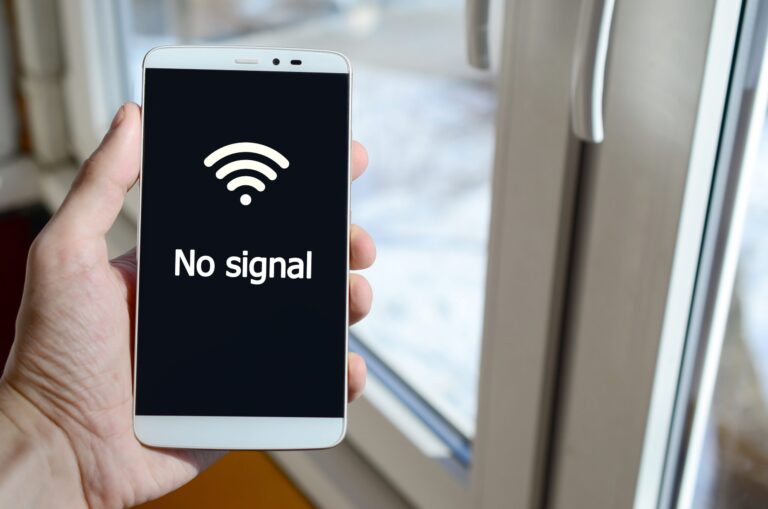Editor’s Note: This article is part of a collaboration between ARTÉMIA Communications and Birds Eye Aerial Drones to help emergency managers and public safety officials educate their communities on safe, legal drone use. Click here to learn more.
As drones have become more widely available to consumers, there has been a notable rise in unauthorized use, particularly during emergencies. In many cases, amateur pilots are not fully aware of the laws and regulations that govern the operation of UAS or the potential consequences of taking flight.
While a lack of knowledge is not an excuse for interfering with disaster response, it is an opportunity for local agencies to more effectively engage with their communities and, ultimately, mitigate the risks associated with unauthorized drone use.
Drone incursions are skyrocketing.
Reports of drone incursions into restricted airspace surged nearly 26% in the first three months of 2025 compared to the year before.
In January, efforts to fight California’s Palisades Fire were halted when a hobby drone struck a CL-415 “Super Scooper” plane that was flying over the area to drop water. The aircraft had to be taken out of service for repairs, and the drone pilot pleaded guilty to a charge of unsafe operation of an unmanned aircraft.
Unfortunately, this was not the only case of interference. News coverage at the time reported that within the first week of the wildfire outbreak, officials had already detected four dozen unauthorized drones flying over the fires.
Emergency responders in multiple states have faced similar challenges. In August, multiple incursions grounded aircraft responding to the Buckley Draw Fire near Provo, Utah. The same month, a drone flying over an accident on I-95 in Maryland posed a serious risk to a medevac helicopter that was en route to the scene.
Why Are Unauthorized Drone Incidents Becoming So Common?
The short answer is widespread consumer access to technology, coupled with a limited understanding of how to use it safely. According to the FAA, there were 822,039 total registered drones in the U.S., comprising 433,407 commercial and 377,484 recreational ones as of July 2025.
Some experts estimate there may be millions operating unregistered, largely because drones weighing less than 0.55 pounds (250 grams) are exempt from registration, while some operators simply do not comply with registration requirements.
Regardless, many hobbyists do not fully understand the risk that unauthorized drone flights can pose during emergency response situations. They may not be aware of temporary flight restrictions (TFR) and may perceive flying a drone near a disaster zone as harmless or even helpful. Most don’t realize their actions could put lives in danger and lead to serious legal consequences.
Limited detection and enforcement resources also contribute to the problem, allowing many unauthorized drones to fly undetected or unchallenged, further complicating emergency operations.
This combination of widespread access and limited understanding creates a perfect storm for ongoing unauthorized drone activity, especially during critical response efforts. Meaningful progress in reducing these incidents depends on proactive communications and deeper community engagement to bridge knowledge gaps and encourage responsible use.

Download the Free Toolkit
Keep your community informed and the skies safe with our press release tool kit. In it, you will find four “plug-and-play” templates designed to help your agency communicate quickly and clearly.
Preventing Incursions through Community Drone Education
One of the most effective ways to prevent unauthorized drone incursions is through focused public education efforts that discourage flights near active emergency scenes. These initiatives use social media, broadcast media, signage in restricted zones, and partnerships with drone user groups to inform the public about flight limitations, the serious risks of unauthorized activity, and how to report suspicious behavior.
The federal government has built a strong baseline for public awareness through national efforts like the FAA’s Know Before You Fly campaign and annual Drone Safety Day. These programs share critical information on registration, remote ID, operational limits, and safe flying practices, reaching millions of pilots nationwide. The initiatives have significantly improved public understanding of drone rules and responsible operation. Yet, because national campaigns are broad by design, they can leave gaps in comprehension at the local level. Local agencies must therefore extend and adapt these messages, tailoring them to reflect regional conditions, challenges, and audiences.
For example, a rural community with a growing hobbyist drone population may benefit from outreach via local fairs, gun clubs, or agricultural networks, while an urban community might engage drone users through social media campaigns, local influencers, or partnerships with tech clubs and schools. Localization also involves addressing the specific concerns and local contexts that influence drone use, such as frequent wildfire risks, large infrastructure projects, or popular recreational areas.
This shift from top-down awareness to locally driven communication gives emergency managers a stronger, more adaptive toolset. It builds trust, strengthens coordination, and turns public outreach into a force multiplier for operational safety.
Elements of Effective Community Engagement
Effective community engagement involves building trust and two-way communication channels that encourage responsible drone use as a shared community value. Key elements include:
- Partnerships with Local Stakeholders: Collaborate with drone hobby groups, educational organizations, public safety entities, and media to create consistent, community-backed messaging.
- Ongoing Community Education and Outreach Events: Host workshops, demonstrations, and Q&A sessions that provide hands-on learning about drone rules, risks, and emergency response impacts.
- Culturally Relevant Communication: Use language and examples that fit the local audience’s experiences and values, delivered through familiar, trusted messengers.
- Continuous Dialogue: Establish mechanisms (surveys, forums, social media groups) for community members to ask questions, share concerns, and participate in creating safer drone environments.
- Timely Emergency Messaging: Deploy clear, simple notices about active Temporary Flight Restrictions or emergency drone guidelines during incidents to encourage voluntary compliance.
By embedding drone safety efforts within community life, agencies can move beyond mere compliance toward fostering a culture where safe drone operation is a collective responsibility that supports lifesaving work.
Communicating with the Public in an Emergency
During an active incident, communication shifts from broad education to precise, time-bound instructions that protect air operations and reduce immediate risk. The goal is to prevent well-intentioned but hazardous flights by explaining in plain terms that any drone in a restricted area can halt firefighting drops or medevac landings, creating direct consequences on the ground. Framing information around operational impact rather than regulations alone strengthens compliance. When paired with clear options for public action — stay clear, share official updates, report sightings — it turns awareness into assistance.
Credible incident communication is unified, fast, and consistent across the channels communities already use. Pre-cleared alerts should be ready for release through PIO workflows, social media, SMS or opt-in notifications, and community outlets, with update intervals that match how quickly air operations evolve.
Each alert should be brief, repeatable, and inclusive: a direct instruction to hold flights, a concise reason (“aircraft operating overhead”), a defined time and area, a reporting method, and a reminder of legal penalties. Delivering these in local languages and accessible formats ensures they reach everyone. Pre-approved templates maintain speed and cohesion under pressure when every minute counts.
The Path Forward
Reducing unauthorized drone activity depends as much on communication as on enforcement. When clear messaging meets trusted local voices, public awareness becomes a form of prevention — one that protects responders, strengthens readiness, and keeps the airspace clear when every second counts.
FAQs
What are Temporary Flight Restrictions (TFRs)?
Temporary Flight Restrictions (TFRs) are no-fly zones established by the FAA during emergency response operations, such as wildfires, accidents, or natural disasters.
Is it illegal to fly a drone over a disaster site or near emergency responders?
The penalties for unauthorized drone operation near emergencies can include fines exceeding $20,000, confiscation of the drone, and possible criminal prosecution. Legal consequences are severe because these flights endanger responders and the general public.
What are the penalties for flying a drone illegally near an emergency scene?
The penalties for unauthorized drone operation near emergencies can include fines exceeding $20,000, confiscation of the drone, and possible criminal prosecution. Legal consequences are severe because these flights endanger responders and the general public.
How do drone incursions impact disaster response operations?
Unauthorized drones create serious hazards during emergency operations. When one enters restricted airspace, aircraft are often forced to land, delaying life-saving missions. Small drones are difficult for pilots to spot, and even minor collisions can disable critical equipment. These disruptions can stall firefighting, search and rescue, and medical evacuations, endangering both responders and the public.
Why is community engagement important in preventing unauthorized drone activity?
Community engagement builds awareness and trust, providing hands-on education about drone laws and the impact of unsafe flights. When local stakeholders participate in public outreach, compliance rates rise and emergency operations are better protected.





